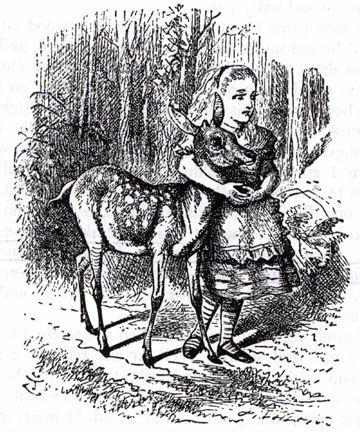Time passes strangely in comics.
It’s one of the many fascinating things about the medium, and while I am not an expert on comics, I am an enthusiast, and so I’d like to write a little bit about it here. Actually, I really want to do a lot of posts on this kind of thing, not just on comics but on story-telling in general, and the workings of fiction, especially when it comes to speculative or experimental literature. There’s so many interesting things to think about, stuff that I’ve only just recently started to get interested in but I certainly intend to learn more about. I’m only really just grazing the surface here, though, and I do have the suspicion that everything I say here is just trite and unimaginative, but at least I’m enjoying myself and attempting to learn new things. So please forgive me if I come across as childish here.
![]()
I highly recommend Understanding Comics by Scott McCloud to anyone who is interested in this sort of thing.
Spider-Man’s adventures were first published in the sixties. At the time, he was only around fifteen years old. At the moment, Spider-Man is supposed to be in his mid-thirties, despite all the time that has passed in-between. This is a good example of Comic Book Time, which is a pretty simple enough concept. Basically, in a lot of comic books and newspaper comics (though less so in graphic novels, because those usually aren’t published periodically), time moves differently than it does in real life, and so it’s hard to match up the two properly.
Time often goes by much slower in these kinds of comics than in real life, or the passing of time is ignored or left to be ambiguous, with the characters gradually maturing and becoming older. This sometimes happens by accident, because both the creators and the readers are growing, so the characters end up growing in some ways too. This isn’t always planned, and often happens very subtly, in an almost organic way.
![]()
Peter Parker as a teenager.
![]()
Peter Parker as an adult.
This is understandable, because if these comics stuck to normal time, then there would be some complications. The Amazing Spider-Man was a monthly comic, so if it had stuck to normal time, then Peter Parker would be too old to fight crime by now, or he’d even be dead. The same goes for most other superheroes. As for newspaper comics, a lot of the humour-based ones aren’t about telling a story where time moves forwards and the characters age. This doesn’t mean that there isn’t any character development; it just occurs in a different way.
![]()
![]()
For instance, when the strip is just beginning, the cartoonist may not yet have a good grasp of how to use their characters properly, but as they draw more and more comics, they learn how to use them better, and so the characters end up having a stronger and more mature feel to them. Also, as I said before, the aging process can sometimes just end up happening whether the creator intended it to or not. Peanuts started out with most of the the characters as either babies or very young children (Snoopy was even a puppy, originally), but over the decades they got older, which was more fitting to the gently dark humour of the strip.
![]()
![]()
I guess it’s important to remember that, with some comics, the audience and intended mood/themes are important factors in all of this. With comic magazines like Spider-Man, X-Men and Superman, or with manga, there’s usually an ongoing storyline, with loads of different plot threads that often take months to resolve, and often pop up again, sometimes years later. If time stayed static, the reader wouldn’t be able to connect as well, because the storyline needs continuity. As well as this, many people develop a connection with these characters, and in quite a lot of cases, grow up with them. Spider-Man was relevant when he first was created because he was the same age as the kids who read his adventures. And, in order to stay relevant, he has to age along with his readers, albeit at a slower rate.
A humorous comic about kids, on the other hand, often needs less aging, because turning the protagonists into teenagers or adults might take away from its original relevance. Calvin and Hobbes, for instance, kept its main character permanently six years old, and that was one of the reasons why it was such an amazing strip. Calvin and Hobbes was set within its own little self-contained, timeless world, whose beauty would have been destroyed if Calvin had aged even a year. (This is in the same way that Peanuts would have been less magical if we actually got to see any of the adults.) His staying six didn’t make the comic stagnant, because the comic wasn’t about him growing up.
![]()
Gasoline Alley is a comic strip that’s famous for having its characters age in real time.
On the other hand, there are a few comics that age their characters in real time. Gasoline Alley (see above) is well-known for this, and has been running for decades now. And then there’s American Splendor (which I haven’t read yet, but soon will), which is an autobiographical comic where the main character obviously had no choice but to age.
Comic book time can sometimes get rather confusing, though, because, in comics, there aren’t really any exact measurements in time. Does every installment of a newspaper strip take place on a different day? What about when newspaper comics have story lines that last weeks, or even months? This is actually one of my favourite things about comics, though; measurements of any sort, or anything to do with maths confuses me, and so it’s nice to have a medium where you kind of have to just accept that time flows oddly, and not over-think things. (Which is, sadly, what I’m doing right now. But I’m not taking any of this seriously; it’s just for fun.)
![]()
The Family Circus isn’t technically a comic, but it is a good example of a newspaper cartoon where the characters haven’t really aged.
When it comes to monthly superhero publications, though, it gets even more confusing. In a few old Spider-Man comics, he’d mention stuff like having fought [X] villain last month, which means that every single month, one new adventure would pop up, and then the rest of the time, everything would be normal. But where it really starts to get confusing is when you start to think about how, if Spidey is in his thirties now, but it was the sixties when he started out, shouldn’t he be just living in the nineties or something by now, instead of the 2000s? Of course, stuff like this involves willing suspension of disbelief, which is very common in lots of fiction, but especially when it comes to superheroes. It’s also another thing I would love to write about here soon.
I hope that this post wasn’t too awful. Please forgive me if it was.
![]()
![]()




















































